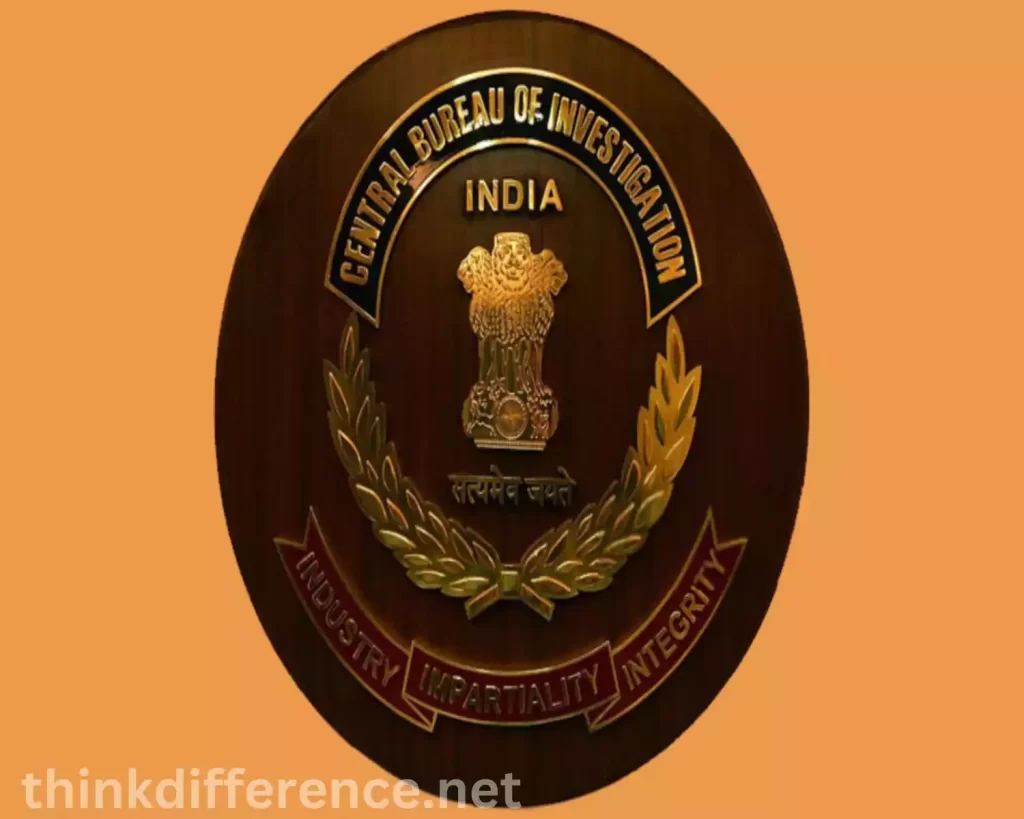Brief overview of CBI and RAW
CBI (Central Bureau of Investigation) and RAW (Research and Analysis Wing), two essential agencies in Indian intelligence and security landscape, play an essential role. Take a brief glimpse at them below:
CBI (Central Bureau of Investigations) :
Established by the Ministry of Personnel, Public Grievances and Pensions in 1963, this independent agency investigates crimes like organized crime, terrorism and corruption. Authorized to do so under the Delhi Special Police Establishment Act 1946, they can take on cases that come their way via state governments, courts or directly from central government – they operate without influence from state police departments while remaining professional throughout.
RAW (Research and Analysis Wing):
RAW (Research and Analysis Wing) is India’s foreign intelligence agency. Established in 1968 as part of Cabinet Secretariat, RAW’s primary purpose is to collect and analyze intelligence on external threats to the Indian Government, with particular attention paid to counter-terrorism, counter-proliferation, monitoring foreign governments/organizations activities as well as performing covert operations & collecting intelligence via human networks; RAW also collaborates with other intelligence agencies worldwide and is known for being highly secretive when gathering foreign intelligence.
CBI and RAW both play vital roles in protecting India’s national interests, but their operational methods and areas of focus differ substantially. It is therefore imperative that individuals fully appreciate these differences between agencies when it comes to maintaining law and order and protecting national interests.
Understanding the differences between CBI agencies and RAW agencies is of utmost importance
Understanding the differences between CBI agencies and RAW agencies for various reasons is vital:
- Clarification of Roles and Responsibilities: Recognizing the differences between CBI and RAW as well as their respective areas of expertise helps establish clarity regarding their roles, responsibilities, and areas. This information allows policymakers, individuals, and the general public to better understand which agency handles certain forms of intelligence or cases – information which aids efficient resource allocation and decision making processes.
- Collaboration is of utmost importance: Both agencies frequently collaborate in cases requiring both domestic and international intelligence. By understanding their individual differences, stakeholders will gain a better grasp of each agency’s strengths and capabilities – leading them to work more closely together toward successful investigations and operations.
- Public Awareness and Transparency: Gaining knowledge of the differences between CBI & RAW increases public awareness and fosters greater transparency, helping the public understand more fully how these agencies operate, their limitations and legal framework within which they function. Having this insight facilitates accountability and trust between citizens and agencies as well as encouraging open dialogue.
- Controversies and Criticism: Both the Central Bureau of Investigation (CBI) and Research and Analysis Wing (RAW) have long been at the center of controversy and criticism, prompting individuals to understand their differences so that any accusations made against either agency can be evaluated accurately, providing individuals with an accurate assessment of each one’s effectiveness, compliance with legal ethics standards, performance, etc.
Understanding the differences between CBI and RAW is vital to safeguarding national security, helping security experts and policymakers make more informed decisions on resource allocation, policy formulation and strategic planning. Understanding their distinction helps security experts and policymakers identify any gaps or overlaps in intelligence gathering or investigation activities; providing a more holistic approach in safeguarding national interests.
Understanding the distinctions between CBI agencies and RAW agencies promotes transparency, collaboration and trust with the public as well as decision making on matters related to national security, law enforcement and intelligence.
CBI (Central Bureau of Investigation)
CBI (Central Bureau of Investigation) is India’s premier investigative agency.

Here are some key facts about them:
- History: In 1963, India established the Central Bureau of Investigation as a special force of police. At first known as Special Police Establishment or SPE, legislation such as Delhi Special Police Establishment Act 1946 established this special police unit that has grown considerably over time to encompass various crimes and cases of national significance.
- Responsibilities and Jurisdiction: The Central Bureau of Investigation, under the Ministry of Personnel, Public Grievances, and Pensions, is available to investigate cases brought forward by state governments, courts, or central governments. Their primary responsibilities include investigating corruption, economic crime, organized crime and terrorism cases as well as cases with national significance.
- CBI Organization: The CBI is structured hierarchically, with various levels of officers ranging from Director to Assistant Sub Inspectors. Its Director is appointed by Central Government; divisions within it include Anti-Corruption Division and Economic Offenses Division.
- Powers and Limitations: The CBI is a highly capable investigative agency with wide-ranging investigative powers, such as searching, arresting and seizing evidence. Cases may be accepted from anywhere across India without prior consent being required, its power may be subject to certain legal constraints due to operating within the scope of Code of Criminal Procedure as well as any relevant legislation.
The CBI is widely recognized for its professionalism, expertise, and independent investigation approach. Working closely with state police forces, intelligence agencies and other law-enforcement bodies to collect evidence, conduct investigations and file charges; its mission is to uphold justice by combatting corruption while upholding laws.
The Criminal Bureau (CBI) has been the source of numerous controversies and accusations of political interference, prompting calls for greater autonomy and reforms. Yet its role as an investigative agency tasked with combatting corruption remains vitally important and its contribution towards accountability cannot be underestimated.
RAW (Research and Analysis Wing)
RAW, India’s primary external intelligence agency, offers some interesting facts and figures here.

Here are a few essential RAW facts:
- History and Establishment: RAW was established following the Indo-Pakistani and Sino-Indian Wars of 1965 and 1962 respectively, to provide India with protection from threats from outside, gather intelligence about national security matters, and keep India secure from foreign interference.
- Jurisdiction and Responsibilities: RAW forms part of India’s Cabinet Secretariat and reports directly to Prime Minister Narendra Modi. RAW’s primary responsibility is collecting and analyzing intelligence on foreign countries that pose security threats against India, with particular attention paid towards counter-terrorism, counterproliferation, monitoring activities of foreign governments/ organizations, providing strategic assessments to policymakers as well as countering proliferators threats.
- Organizational Structure: RAW operates hierarchically, led by an agency secretary (usually a police officer). Subsidiaries of RAW include technical intelligence, human intelligence, analysis and counterintelligence teams that specialize in various areas. Recruitment for RAW takes place from various government agencies as well as military services.
- Powers and Limitations: RAW enjoys significant independence and is empowered to conduct intelligence gathering and covert operations outside India’s borders. The agency maintains an international network of informants, agents, and sources from which information can be gathered; its activities remain within legal boundaries set forth by India’s legal framework and policy framework.
RAW uses various intelligence-gathering strategies and methodologies, including human, signals, imagery and open source intelligence gathering. RAW shares information and works closely with foreign intelligence agencies to address common security challenges.
RAW is an immensely classified agency, with little available to the public about its activities and needs. RAW plays an essential role in protecting India’s national interests, assessing threats from abroad and providing strategic intelligence to government.
RAW has come under considerable criticism due to issues surrounding its accountability, operations and allegations of human rights violations. These have resulted in calls for more transparency, oversight and reform within RAW itself; yet RAW remains a key player within India’s intelligence landscape.
Differences between CBI and RAW
The Central Bureau of Investigation and RAW, or Research and Analysis Wing, have various differences.
Here are some key distinctions:
1. Purpose and Objectives:
- CBI: The Central Bureau of Investigation is an Indian federal investigative agency responsible for criminal prosecution in India and across its borders. Their primary mission is to detect corruption, economic crimes, organized crime and terrorism as well as their causes in India.
- RAW: RAW is an external agency which gathers intelligence on foreign countries and threats to India’s national security. Its primary mission is to analyze and assess intelligence on international matters as well as monitor activities of foreign governments.
2. Area of Focus:
- CBI: India is at the core of CBI’s activities. Investigative cases referred by state governments and courts as well as central government are handled here, along with any criminal offenses of national significance that arise from those investigations.
- RAW: RAW is responsible for gathering intelligence on foreign countries and keeping an eye on terrorist groups, foreign governments and any potential threats to India’s safety that are outside its borders.
3. Operational Methods:
- CBI: The CBI conducts investigations using established investigative techniques, such as questioning suspects and collecting evidence, as well as conducting raids. Their investigative methods utilize traditional approaches as well as legal processes.
- RAW: RAW operates covertly and employs multiple intelligence-gathering methods, including human, signals and imagery intelligence (HUMINT/SIGINT/IMINT). RAW uses clandestine operations, undercover agents and informants to gather intelligence from foreign sources.
4. Relationship with the Government:
- CBI: CBI operates under the administrative oversight of the Ministry of Personnel, Public Grievances and Pensions; however, in order to remain impartially and independently governed.
- RAW: RAW is directly under the authority of both the Prime Minister’s Office and Cabinet Secretariat, providing greater autonomy and secrecy for operations.
5. International Cooperation:
- CBI: While the CBI generally specializes in domestic investigations, when cases require international assistance or involve crimes that cross borders it collaborates with foreign law enforcement agencies including INTERPOL to assist.
- RAW: RAW has strong working relations with foreign intelligence agencies that share similar security interests, engaging in intelligence sharing, joint operations and collaborative initiatives in order to address common threats and challenges.
Understanding these distinctions will help you better comprehend the roles and responsibilities assigned to both organizations, particularly RAW’s expertise in gathering external intelligence analysis to uphold national security interests globally.
Collaboration between CBI and RAW
Where the expertise and mandates of both RAW and CBI overlap, you can see them working closely together. Below are some aspects of their cooperation:
- Joint Operations: When investigations involve both national and international dimensions, CBI and RAW can come together to conduct joint operations. They can pool intelligence, expertise and resources in order to address complex criminal cases with global implications or connections.
- Sharing Intelligence: CBI and RAW may exchange intelligence when their combined expertise is necessary in solving cases. Due to its strength in foreign intelligence, RAW can offer inputs regarding transnational crime, terrorism or activities of entities abroad that might affect India; while the CBI’s investigative expertise could provide vital inputs relevant for RAW operations or assessments.
- Support in International Investigations: RAW can assist the CBI when conducting international investigations by gathering intelligence, communicating with foreign agencies and tracking suspect movements – their international expertise will prove invaluable in these instances.
- Coordination of Counterterrorism: Efforts Both agencies play key roles in counterterrorism efforts: RAW gathers intelligence about terrorist groups abroad while CBI investigates and prosecutes cases within India itself. By sharing information and aligning strategies between both agencies, coordination will help combat threats posed by terrorists.
- Training and Capacity-Building: The CBI may work closely with RAW to implement programs and initiatives designed to strengthen personnel abilities and skillsets. Such collaboration could involve exchanging best practices, intelligence analysis techniques and investigation methodologies – providing a continuous exchange of knowledge and expertise between organizations.
Cooperation between CBI & RAW can vary depending on a variety of factors such as case specific intelligence needs and legal frameworks that govern their operations. Both agencies work collaboratively towards protecting national security, combatting crime, and responding to threats that require their combined efforts.
Controversies and criticisms
Both CBI and RAW have come under scrutiny and criticism. Here are some of the more pressing concerns:
CBI:
- Political Influence: Critics allege that the Criminal Bureau Investigation has political influences over its investigations. According to these criticisms, CBI can be controlled or directed by government agents with political connections in order to target political enemies or protect individuals with connections who wish to remain hidden from scrutiny.
- Lack of Autonomy: Critiques have raised concerns regarding the Central Bureau of Investigation’s independence and autonomy, with key appointments or transfers made based on political considerations which could compromise impartiality at CBI.
- Lack of Transparency and Accountability: The Criminal Bureau Investigation has come under scrutiny for failing to meet standards of transparency when handling specific investigations and sensitive information, with cases under scrutiny being selected without appropriate investigation and how sensitive data has been handled being particularly egregious examples of nontransparent behavior by them. They’ve even been criticized for choosing which cases they want investigated without due transparency and accountability being observed when handling sensitive material!
- Delayed Investigations and Legal Challenges: On occasion, the CBI has faced delays when investigating and prosecuting cases; this has raised doubts as to its efficiency and effectiveness as an agency. Legal and procedural obstacles associated with high-profile cases also cast a shadow over whether justice will be delivered on time by it.
RAW:
- Lack of Oversight: RAW operates with limited public scrutiny, sparking concerns that there are ineffective oversight mechanisms. Critics contend this lack could allow abuses of power or violations of human rights without adequate checks and balances to provide balances against possible misdeeds by RAW personnel.
- Alleged Human Rights Violations: RAW’s covert activities both within India and outside it have been charged with violating human rights violations such as extrajudicial actions, abductions and illegal detentions – particularly when operating near conflict zones where human rights issues become an issue for RAW operations.
- Lack of Accountability: RAW stands accused of lacking transparency and accountability due to its secrecy, with critics alleging this may lead to abuses that violate international standards and lead to violations within RAW itself.
- Politico-Politcal Misuse: Like CBI and CIA, RAW stands accused of being used by government forces for political gain – this damage credibility of agency as it undermines independence of operation.
Debates often center around controversial issues with wide-ranging scope and validity, making the focus of debates an ongoing effort to increase transparency and accountability within both agencies.
Conclusion
The Central Bureau of Investigation (CBI) and The Research and Analysis Wing (RAW) are the cornerstones of India’s security and intelligence apparatus. While the CBI focuses on domestic criminal cases, ensuring accountability and justice, RAW’s mission lies in gathering foreign intelligence and safeguarding the nation’s interests on the global stage. Their distinct roles and contributions complement each other, making India a safer and stronger nation.

